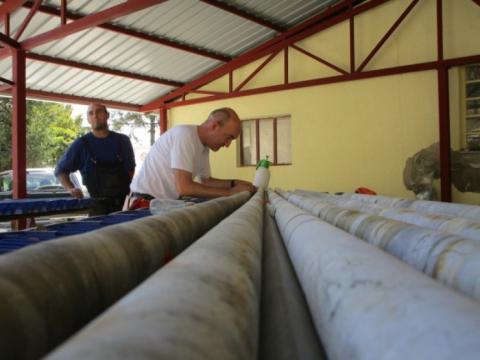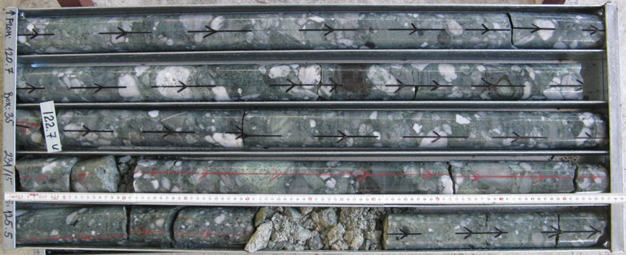Practical Exploration Geology II - Drill Core Orientation

Drill Core Orientation in Rudnik
The Mineco PDT team have been conducting a drilling campaign at our Rudnik mine in Serbia throughout the summer. As well as using the extracted core to identify mineralisation we can obtain very important structual data (measuring the directional properties of the rock) that is critical in developing our understanding of the wider geological setting. However to do this accurately we must „orientate“ the core for reference.
This is conducted with an orientation device; a long spear with a coloured graphite tip, which is lowered into the drill hole. It is allowed to fall, under gravity, down the hole until it hits the top of the core sample and leaves an orientation mark. To maximise the accuracy of this technique we use the following technique:
- The drill bit must be on the bottom of the hole.
- The spear tip must be sharp
- The tip must be firmly screwed into the spear to prevent it and the spear from bending. A bent spear tip will produce inaccurate results.
- The spear should be lowered so that it produces a single punch mark. If it is lowered too slowly it will fail to produce a mark, and if it is lowered too fast the spear may bounce, producing multiple punches. The correct speed depends on the angle of the hole and the hardness of the rock and can only be determined by trial and error.
- The spear should be connected directly to the wireline. No additional rods should be screwed into the spear to increase its weight.

Once the ore is extracted by wireline from the drill hole it is taken to the core shed for inspection and geotechnical logging. Each individual core piece is taken from the core trays and laid out on a specially adapted tab with orientation mark facing upwards.
To identify the orientation line, the separate orientation marks are connected with a thick black line (for intervals with high confidence of the orientation), with a broken line (for uncertain orientation; if there is a slight discrepancy between the directions of the marks or when some of the core pieces do not fit together well) or red line for intervals without orientation.
We then conduct structural logging on our “rocket launcher” device. The Rocket Launcher recreates the position of the core in drill hole, with identical azimuth and dip. The project geologists then continue the logging by recording a detailed description of rock lithology, alteration and mineralisation.
Once this is complete the core is handed over to a technical assistant where it is then cut in half in preparation for assay.



